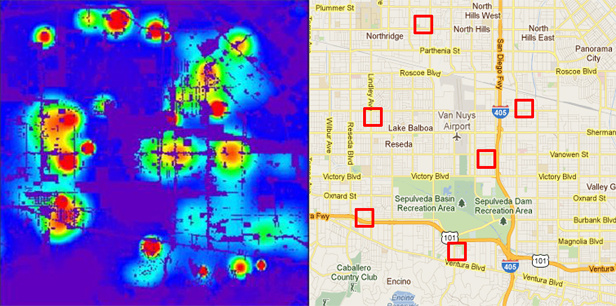The Crime-Predicting Software Effective In Reducing LA Crime

Though it’s not yet quite up to snuff in predicting how actual crimes will take place and who will commit said act à la Minority Report (there’s that reference again), the Los Angeles Police Department has announced its high-tech algorithms used to predict and prevent future crimes has already had a significant impact in reducing certain criminal activity in areas covered by the prophetic computer system.
Developed by a start-up based in Santa Cruz, California, ‘PredPol’ gathers and aggregates data based off of previous crimes in its area and applies algorithms to the data set to pinpoint a likely time and location in which a certain crime is most likely to occur.
“The inputs are straightforward: previous crime reports, which include the time and location of a crime. The software is informed by sociological studies of criminal behaviour, which include the insight that burglars often ply the same area,” MIT’s Technology Review describes. “The system produces, for each patrol shift, printed maps speckled with red boxes, 500 feet on each side, suggesting where property crimes specifically, burglaries and car break-ins and thefts are statistically more likely to happen.”
Arresting would-be crims before they've even committed the crime might still be some time off, but for the moment at least PredPol has been effective in reducing property crime by 25 percent during its trial period in the Foothill district of LA. What’s more, the software was six times better in predicting crime than randomly-placed boxes during the same tests. Rather than being a tool for arresting people, the software is more about crime prevention than anything else; whereby law enforcement agencies use the software to suggest locations to up police presence, thus reducing the likelihood of a crime taking place.
Having already been tested in its home town of Santa Cruz, Calif., PredPol is now being used in six different areas of LA, and is expected to expand to other US cities in the near future.
Richard Birkett

